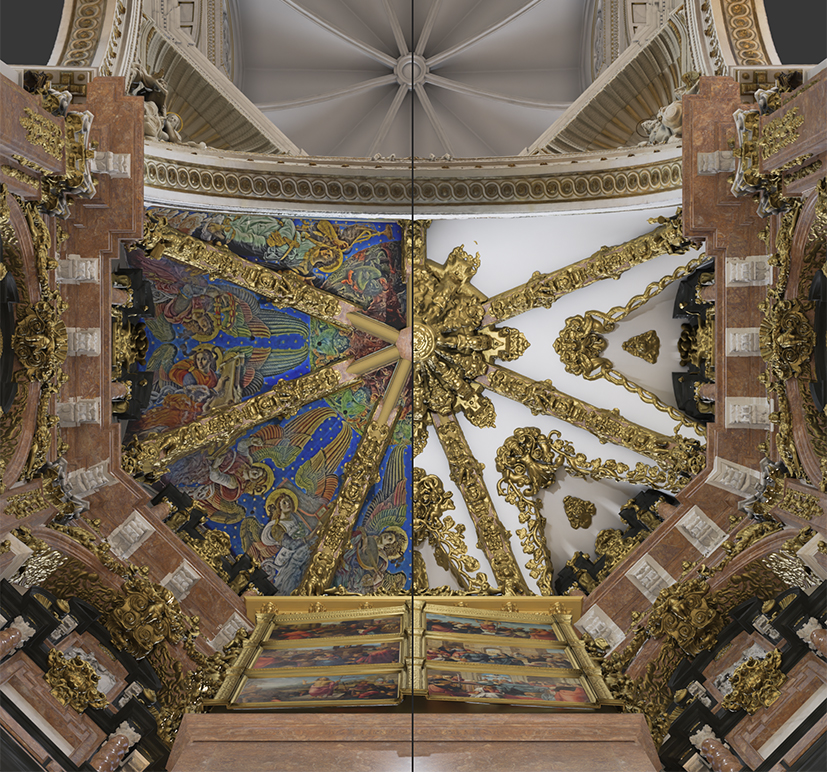
Virtual Anastilosis of a Baroque Dome Disassembled Two Decades Ago: The Case of the Presbytery of Valencia Cathedral
Abstract
This study presents the virtual anastilosis of the Baroque dome in the presbytery of Valencia Cathedral, a significant architectural piece demolished two decades ago to reveal Renaissance frescoes.
Employing a novel integration of multi-temporal laser scanning data, the research reconstructs the dome’s previous state, showcasing the potential of digital techniques in preserving architectural heritage. Initially, the dome was digitally documented before its removal in 2005, following the discovery of frescoes by Paolo de San Leocadio and Francesco Pagano, hidden behind of it.
This documentation utilized phase difference laser scanning, a method that captured the dome’s geometry with high precision. Recently, further scanning of the cathedral’s main chapel was conducted, providing a detailed current state against which the previous model could be aligned and integrated.
The methodology involved evaluating and optimizing both sets of data to accurately position the digitally reconstructed Baroque vault within its original context, overcoming challenges such as the absence of normal information in earlier scans.
The result is a high-fidelity 3D model of the cathedral’s main chapel, with the Baroque vault accurately reinstated, illustrating the harmony between Baroque and Renaissance elements that was disrupted by the dome’s demolition.
This project highlights the critical role of digitized surveying and 3D modelling in architectural heritage preservation, offering insights into the importance of maintaining a digital archive for heritage sites, allowing for virtual reconstructions that honor their historical integrity and complexity.
DOI: https://doi.org/10.20365/disegnarecon.32.2024.14
Keywords
Full Text:
PDFRefbacks
- There are currently no refbacks.
Copyright (c) 2024 Eduard Maria Baviera Llópez, Jorge Llopis Verdú, Ignacio Cabodevilla-Artieda
DISEGNARECON
ISSN 1828 5961
Registration at L'Aquila Law Court no 3/15 on 29th June, 2015.
Indexed in SCOPUS. Diamond Open Access. All papers are subjected to double blind peer review process by qualified reviewers.
Journal founded by Roberto Mingucci
